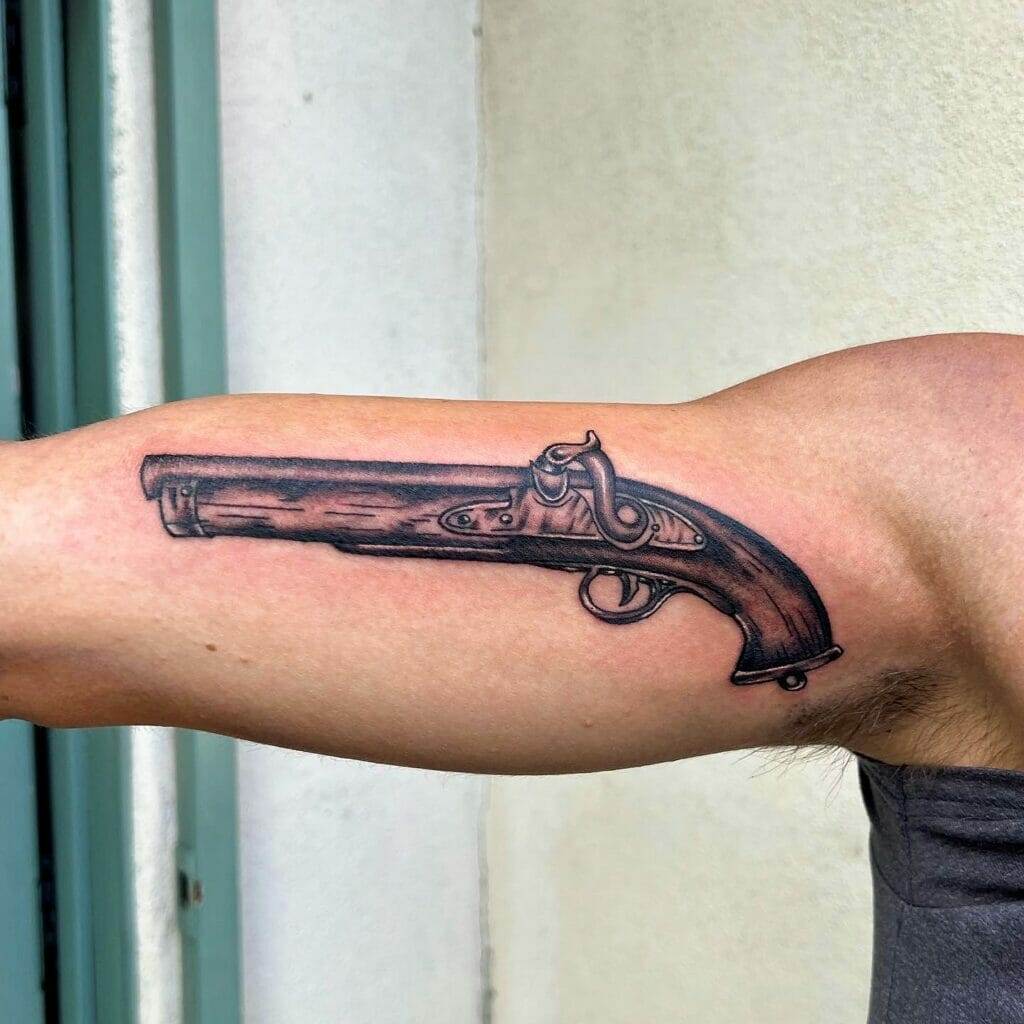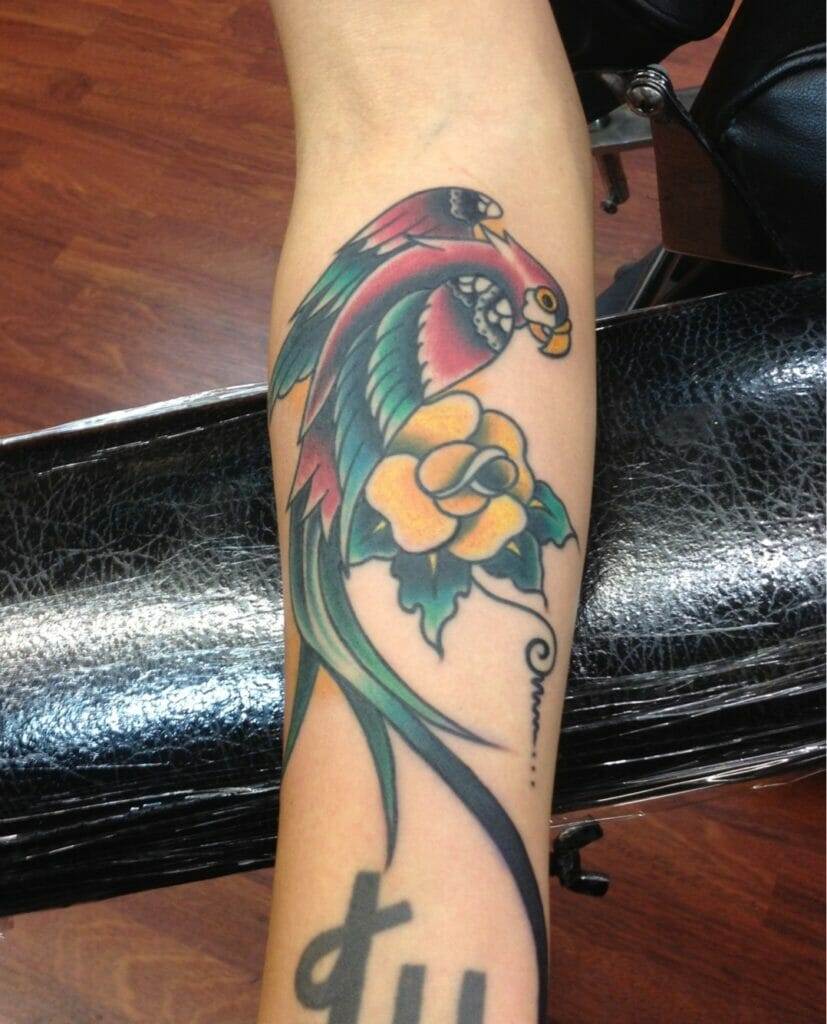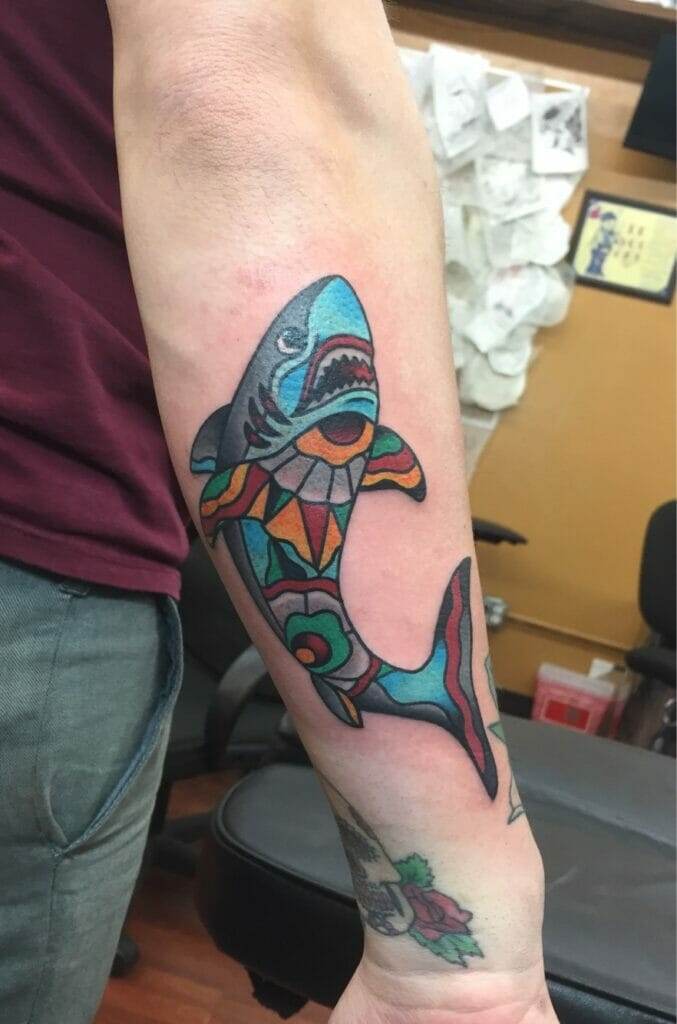Traditional tattooing is a form of body art that has been practiced for centuries in various cultures around the world. It involves the permanent marking of the skin with ink, using different techniques and tools. Traditional tattooing holds great importance in different cultures, serving as a means of cultural expression, identity formation, and spiritual practice. It is not only a form of art but also a way to connect with one’s heritage and ancestors.
Traditional tattooing is defined as the practice of using specific techniques and designs that have been passed down through generations within a particular culture or community. These techniques often involve hand-poking or hand-tapping methods, where the ink is manually inserted into the skin using a needle or other sharp object. The designs used in traditional tattooing are often deeply rooted in cultural symbolism and carry significant meanings.
The significance of traditional tattooing as an art form cannot be understated. It is a unique way for individuals to express themselves and their cultural identity through their bodies. Traditional tattoos are not just decorative; they serve as visual narratives that tell stories about one’s heritage, beliefs, and experiences. The artistry involved in traditional tattooing lies not only in the design itself but also in the skill and precision required to execute it.
The History and Origins of Traditional Tattooing: A Global Perspective
The history of tattooing dates back thousands of years, with evidence of its practice found in various ancient civilizations. The earliest evidence of tattooing can be traced back to ancient Egypt, where mummies have been discovered with tattoos on their bodies. These tattoos were often symbols of status, protection, or religious significance.
Tattooing spread across different cultures through trade routes and exploration. It was practiced by indigenous tribes in Polynesia, Africa, Asia, and the Americas long before it reached Europe. Each culture developed its own unique tattooing traditions and techniques, influenced by their beliefs, customs, and environment.
The evolution of traditional tattooing techniques can be seen throughout history. In ancient times, tattooing was done using primitive tools such as bone or wood needles, which were manually tapped into the skin. As time progressed, different cultures developed their own tools and techniques. For example, Polynesian tattooing used a technique called “tatau,” where the ink was applied using a comb-like instrument. In Japan, traditional tattooing involved using hand-held needles attached to wooden handles.
The Symbolism and Meanings Behind Traditional Tattoo Designs
Traditional tattoo designs are rich in symbolism and carry deep cultural and spiritual meanings. Each design has its own significance and tells a story about the wearer’s identity and beliefs.
In many cultures, traditional tattoos serve as a rite of passage or a mark of achievement. They can symbolize bravery, strength, or honor. For example, in Maori culture, facial tattoos called “moko” are seen as a sign of prestige and social status. These intricate designs are unique to each individual and represent their genealogy, tribal affiliations, and personal achievements.
Traditional tattoos also play a significant role in spiritual practices. In some cultures, tattoos are believed to have protective or healing properties. They can serve as a form of spiritual armor or a way to connect with the divine. For example, in Thai culture, Sak Yant tattoos are believed to provide protection and bring good fortune to the wearer.
Furthermore, traditional tattoos can be used as a form of storytelling or visual representation of cultural myths and legends. They can depict ancestral spirits, animals, or symbols that hold cultural significance. These designs not only preserve cultural heritage but also serve as a way to pass down stories and traditions to future generations.
Traditional Tattooing Techniques and Tools: From Hand-Poking to Modern Machines

Traditional tattooing techniques vary across cultures and regions. The most common techniques used in traditional tattooing are hand-poking and hand-tapping.
Hand-poking, also known as stick-and-poke, involves manually inserting the ink into the skin using a needle or other sharp object. This technique requires great skill and precision, as the artist must control the depth and angle of the needle to create the desired effect. Hand-poking is often used in traditional tattooing practices in Southeast Asia, such as Thai Sak Yant tattoos and Filipino tribal tattoos.
Hand-tapping is another traditional tattooing technique that involves using a sharp object, such as a bone or wood stick, to tap the ink into the skin. This technique is commonly used in Polynesian tattooing, where the artist creates intricate designs by tapping the ink into the skin with a comb-like instrument called a “moli.”
In modern times, traditional tattooing techniques have been adapted to incorporate tattoo machines. These machines use electromagnetic coils to move the needle up and down, allowing for faster and more precise tattooing. While some traditional tattoo artists embrace this modern technology, others prefer to stick to traditional hand-poking or hand-tapping methods.
The Role of Traditional Tattooing in Identity Formation and Cultural Belonging
Traditional tattoos play a crucial role in identity formation and cultural belonging. They serve as visual markers of one’s cultural heritage, beliefs, and experiences.
In many cultures, traditional tattoos are seen as a way to connect with one’s ancestors and preserve cultural traditions. They are a source of pride and a way to honor one’s roots. Traditional tattoos can also serve as a form of resistance against cultural assimilation or erasure. They are a visible reminder of one’s cultural identity in a world that often tries to homogenize or marginalize certain cultures.
Traditional tattoos also allow individuals to express their individuality within their cultural context. Each design is unique to the wearer and carries personal significance. Traditional tattoos can represent personal experiences, aspirations, or values. They are a way for individuals to assert their autonomy and create a sense of self within the framework of their cultural identity.
Furthermore, traditional tattoos hold great significance in different subcultures. They can be a way for individuals to identify with a particular group or community, such as bikers, sailors, or members of specific music genres. Traditional tattoo designs are often associated with these subcultures and serve as a visual representation of shared values and interests.
Traditional Tattooing and Gender: Exploring the Intersection of Body Art and Gender Identity
Traditional tattooing has long been associated with masculinity, particularly in Western cultures. However, the role of tattoos in gender expression is complex and varies across different cultures and time periods.
In some cultures, traditional tattoos have specific meanings or designs associated with gender. For example, in Polynesian culture, men often have tattoos on their arms and legs, while women typically have tattoos on their hands and faces. These gender-specific designs reflect societal expectations and roles.
However, the significance of tattoos in gender identity is not limited to traditional designs. In contemporary society, tattoos have become a way for individuals to express their gender identity or challenge traditional gender norms. Many people use tattoos as a form of self-expression and empowerment, regardless of their gender identity.
For gender-nonconforming individuals, traditional tattooing can present unique challenges. Traditional tattoo designs may not align with their gender identity or may reinforce binary notions of gender. However, there is a growing movement within the tattoo community to create inclusive spaces and designs that cater to individuals of all gender identities.
Traditional Tattooing and Spirituality: The Significance of Tattoos in Religious and Spiritual Practices
Tattoos have long held spiritual significance in many cultures around the world. They are seen as a way to connect with the divine, protect against evil spirits, or mark one’s devotion to a particular religious practice.
In Hinduism, tattoos are often used as a form of devotion to a specific deity. They can depict symbols or mantras associated with the deity and serve as a constant reminder of one’s spiritual path. Similarly, in Buddhism, tattoos are used as a form of protection and spiritual guidance. They can depict sacred symbols or prayers and are believed to bring blessings and good fortune to the wearer.
In indigenous cultures, tattoos are often used in spiritual rituals or ceremonies. They can symbolize a person’s connection to the natural world, their ancestors, or the spirit realm. These tattoos are seen as a way to communicate with the divine and receive guidance or protection.
However, individuals with spiritual tattoos may face challenges in modern society. Some religious traditions may view tattoos as taboo or sacrilegious. In some cases, individuals with visible spiritual tattoos may face discrimination or judgment. It is important for society to respect and understand the cultural and spiritual significance of these tattoos.
The Challenges and Controversies of Traditional Tattooing: Cultural Appropriation and Misrepresentation
Traditional tattooing is not without its challenges and controversies, particularly when it comes to cultural appropriation and misrepresentation.
Cultural appropriation occurs when elements of one culture are adopted by another culture without understanding or respecting their cultural significance. In the context of traditional tattooing, cultural appropriation can occur when individuals from non-indigenous cultures appropriate traditional designs without understanding their meanings or cultural context.
This issue is particularly prevalent in Western societies, where traditional tattoo designs from indigenous cultures are often commodified and stripped of their cultural significance. This not only disrespects the cultural heritage of these designs but also perpetuates harmful stereotypes and erases the voices of indigenous communities.
Traditional tattoo artists also face challenges in modern society. They often struggle to preserve their cultural traditions in the face of globalization and commercialization. Traditional tattooing requires specialized skills and knowledge that are passed down through generations, but these traditions are at risk of being lost as younger generations turn to modern tattooing techniques.
It is crucial for individuals and the tattoo community as a whole to educate themselves about the cultural significance of traditional tattoos and to respect the cultural traditions from which they originate. This includes seeking out traditional tattoo artists who have a deep understanding of the designs and their meanings.
Traditional Tattooing Around the World: A Look at Different Cultural Traditions and Practices
Traditional tattooing practices vary greatly across different cultures and regions. Each culture has its own unique designs, techniques, and meanings associated with tattoos.
In Polynesian culture, tattoos hold great significance and are deeply rooted in tradition. Polynesian tattoos often feature intricate geometric patterns that represent different aspects of nature, spirituality, and genealogy. These tattoos are created using the hand-tapping technique and are seen as a way to connect with one’s ancestors and protect against evil spirits.
In Japan, traditional tattooing has a long history and is known as “irezumi.” Japanese tattoos often depict mythical creatures, gods, or heroes from folklore. They are created using hand-poking techniques and are seen as a form of art that requires great skill and dedication. Japanese tattoos are often associated with the yakuza, but they have also gained recognition as a unique form of artistic expression.
In indigenous cultures of North America, traditional tattoos have been used for centuries as a way to mark important life events or achievements. These tattoos often depict animals, symbols, or patterns that hold cultural significance. They are created using hand-poking techniques and serve as a visual representation of one’s connection to the land and community.

The Enduring Appeal of Traditional Tattooing in a Modern World
Traditional tattooing continues to hold great appeal in contemporary society, despite the rise of modern tattooing techniques. Its enduring popularity can be attributed to its rich cultural heritage, deep symbolism, and unique artistry.
Traditional tattoos serve as a way for individuals to connect with their cultural roots, express their identity, and preserve their heritage. They are not just decorative; they carry stories, beliefs, and experiences that are passed down through generations. Traditional tattooing is an art form that transcends time and place, allowing individuals to create a visual narrative on their bodies.
It is crucial for society to respect and appreciate the cultural significance of traditional tattooing. This includes understanding the meanings behind different designs, supporting traditional tattoo artists, and avoiding cultural appropriation or misrepresentation.
By preserving traditional tattooing techniques and honoring their cultural origins, we can ensure that this unique art form continues to thrive for future generations. Traditional tattooing is not just a trend; it is a living tradition that deserves to be celebrated and respected.



